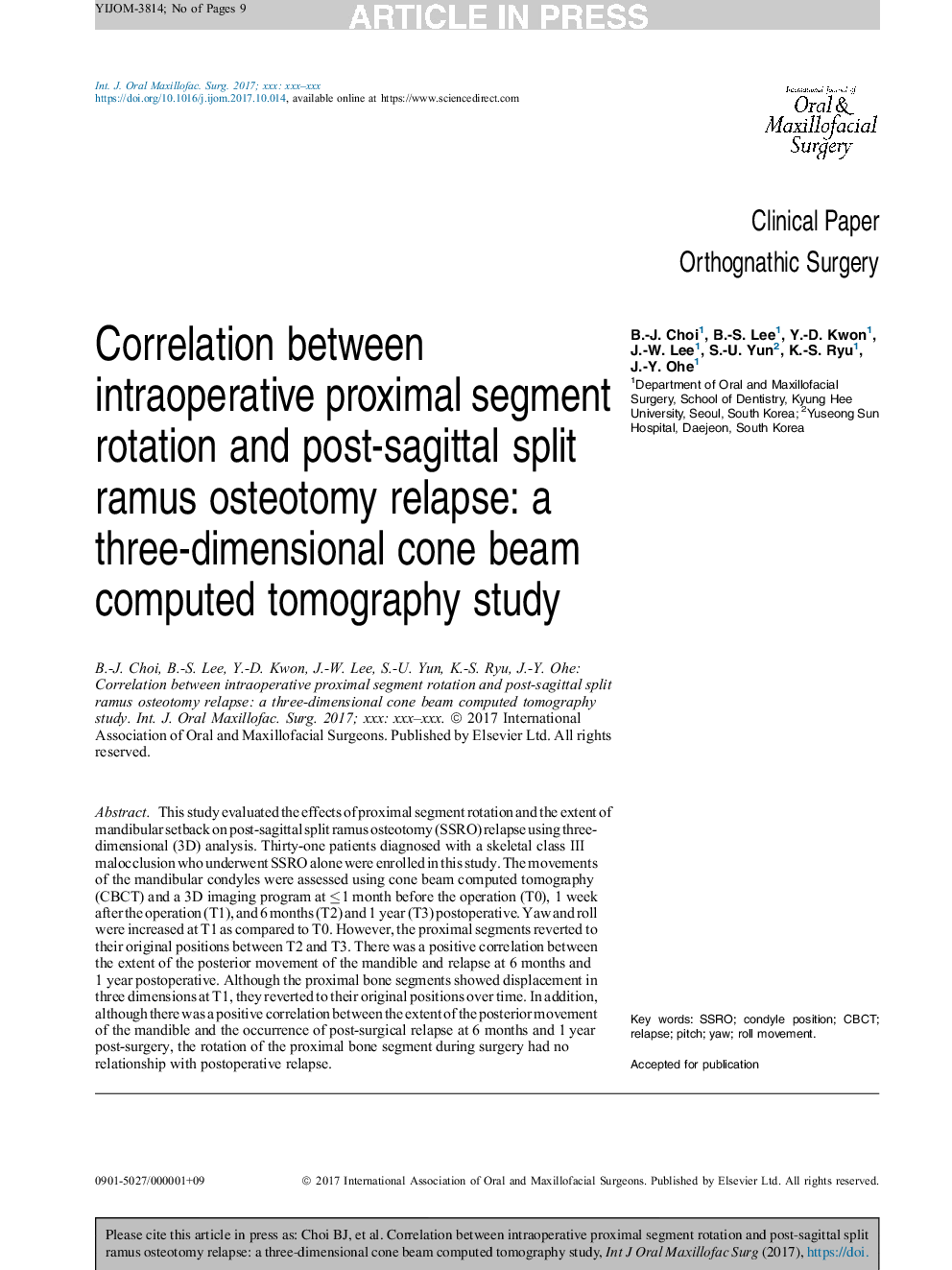| Article ID | Journal | Published Year | Pages | File Type |
|---|---|---|---|---|
| 8697824 | International Journal of Oral and Maxillofacial Surgery | 2018 | 9 Pages |
Abstract
This study evaluated the effects of proximal segment rotation and the extent of mandibular setback on post-sagittal split ramus osteotomy (SSRO) relapse using three-dimensional (3D) analysis. Thirty-one patients diagnosed with a skeletal class III malocclusion who underwent SSRO alone were enrolled in this study. The movements of the mandibular condyles were assessed using cone beam computed tomography (CBCT) and a 3D imaging program at â¤1 month before the operation (T0), 1 week after the operation (T1), and 6 months (T2) and 1 year (T3) postoperative. Yaw and roll were increased at T1 as compared to T0. However, the proximal segments reverted to their original positions between T2 and T3. There was a positive correlation between the extent of the posterior movement of the mandible and relapse at 6 months and 1 year postoperative. Although the proximal bone segments showed displacement in three dimensions at T1, they reverted to their original positions over time. In addition, although there was a positive correlation between the extent of the posterior movement of the mandible and the occurrence of post-surgical relapse at 6 months and 1 year post-surgery, the rotation of the proximal bone segment during surgery had no relationship with postoperative relapse.
Related Topics
Health Sciences
Medicine and Dentistry
Dentistry, Oral Surgery and Medicine
Authors
B.-J. Choi, B.-S. Lee, Y.-D. Kwon, J.-W. Lee, S.-U. Yun, K.-S. Ryu, J.-Y. Ohe,
